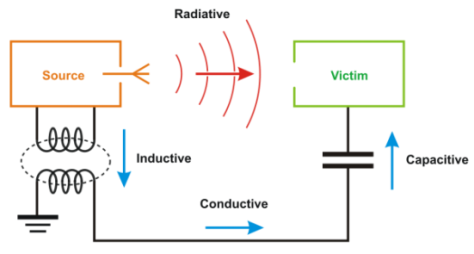
Many electronic products generate electromagnetic interference (EMI). Digital devices may emit undesired RF that could interfere with the operation of other electrical devices and systems located within close proximity. Mixed signal components (digital and analog) are both used on printed circuit boards. Hardware engineers are generally more concerned with functionality to meet a marketing specification than regulatory compliance. After all compliance is someone else’s job. In addition, software engineers must also be knowledgeable in functional safety as it relates to unintended operation due to an external transient event such as surge or ESD. For this reason, many programmers have no idea about how to write code for functional safety or that a need actually exist. We therefore have a disconnect between those involved in code development and EMC compliance. EMC, safety, hardware design and software engineers all have different skill sets. In many companies, everyone operates largely independent of each other.
Years ago, most regulatory compliance engineers wore two hats on a full-time basis; safety and EMC, a tough job to have. Today, both safety and EMC engineers now specialize in a niche area of engineering. They may not be well versed in various aspects of someone else’s job description. Companies without an integrated compliance department, including validation and test engineering, may not be aware of the increased risk associated with integration of hardware, software and firmware. The European EMC Directive does not address electro/mechanical product safety. What could happen if an EMI transient event entered a product causing a life safety issue? Would the unit have the ability, upon malfunction, to notify the operator or user that a fault condition occurred?
EMC engineers should be educated in Hazard Based Safety Engineering (HBSE) principles, which addresses functional safety along with hazard and risk assessments. In addition, software engineers must also be trained to recognize foreseeable effects of EMI disturbance that may occur and generate code that places the device into a safe mode of operation under any fault condition. EMC, safety, hardware design, programmers and validation engineers must work together to determine the severity of a hazard, the magnitude of risk and probability of an event that could cause an electrical shock hazard, mechanical injury or other functional harm.

Leave a Reply